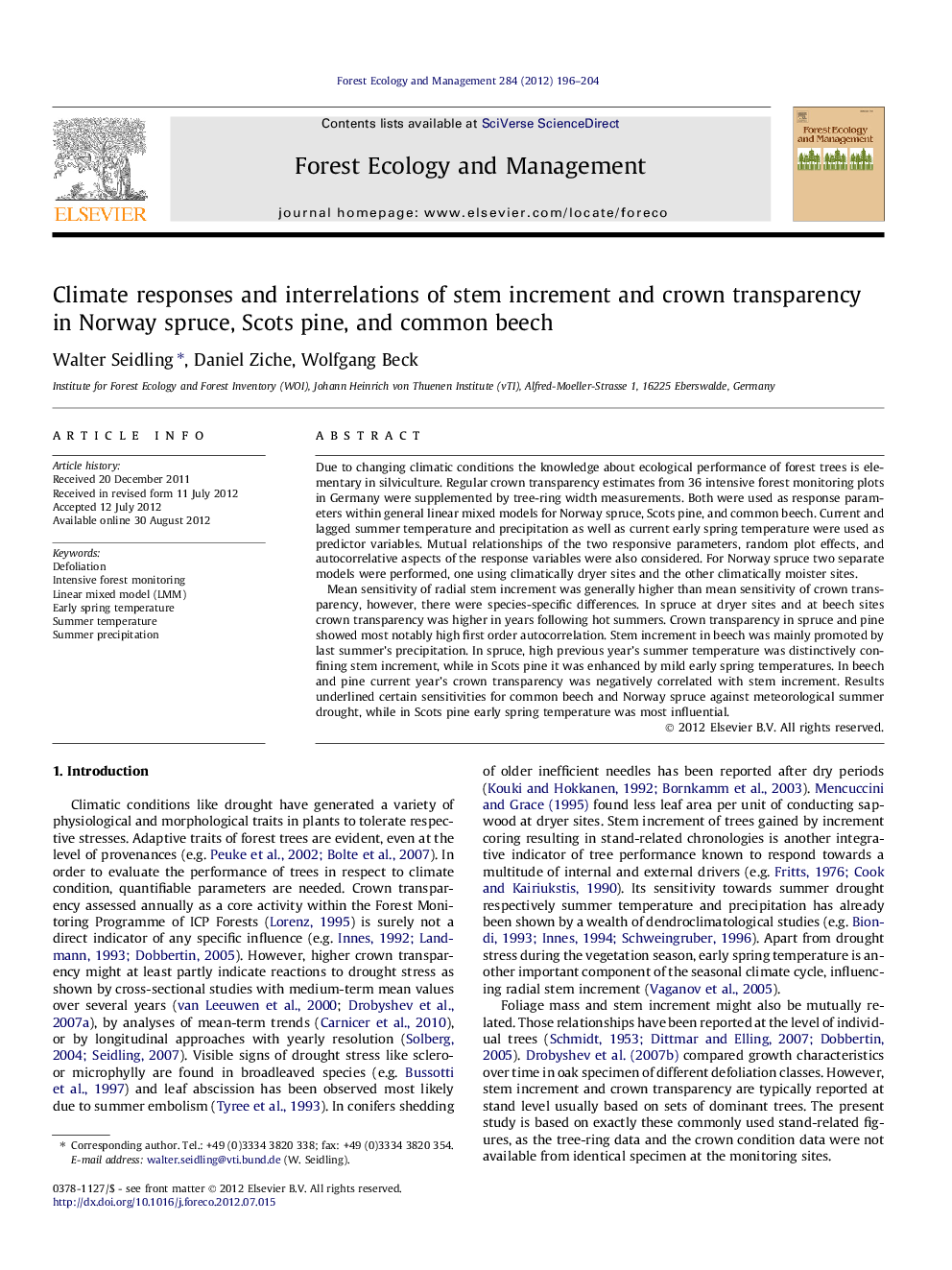| Article ID | Journal | Published Year | Pages | File Type |
|---|---|---|---|---|
| 87279 | Forest Ecology and Management | 2012 | 9 Pages |
Due to changing climatic conditions the knowledge about ecological performance of forest trees is elementary in silviculture. Regular crown transparency estimates from 36 intensive forest monitoring plots in Germany were supplemented by tree-ring width measurements. Both were used as response parameters within general linear mixed models for Norway spruce, Scots pine, and common beech. Current and lagged summer temperature and precipitation as well as current early spring temperature were used as predictor variables. Mutual relationships of the two responsive parameters, random plot effects, and autocorrelative aspects of the response variables were also considered. For Norway spruce two separate models were performed, one using climatically dryer sites and the other climatically moister sites.Mean sensitivity of radial stem increment was generally higher than mean sensitivity of crown transparency, however, there were species-specific differences. In spruce at dryer sites and at beech sites crown transparency was higher in years following hot summers. Crown transparency in spruce and pine showed most notably high first order autocorrelation. Stem increment in beech was mainly promoted by last summer’s precipitation. In spruce, high previous year’s summer temperature was distinctively confining stem increment, while in Scots pine it was enhanced by mild early spring temperatures. In beech and pine current year’s crown transparency was negatively correlated with stem increment. Results underlined certain sensitivities for common beech and Norway spruce against meteorological summer drought, while in Scots pine early spring temperature was most influential.
► Crown transparency and stem increment are only weakly related to each other. ► Crowns of beech and spruce trees are more transparent after hot summers. ► Stems of beech trees grow better in the year after moist summers. ► Stem increment in spruce is reduced by high summer temperatures in the previous year. ► Stem increment in Scots pine is mainly enhanced by high early spring temperatures.
